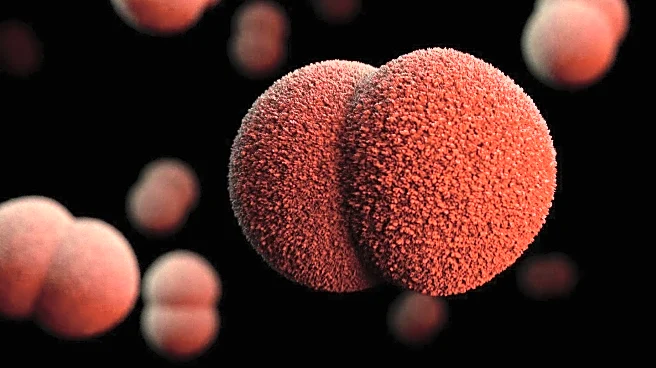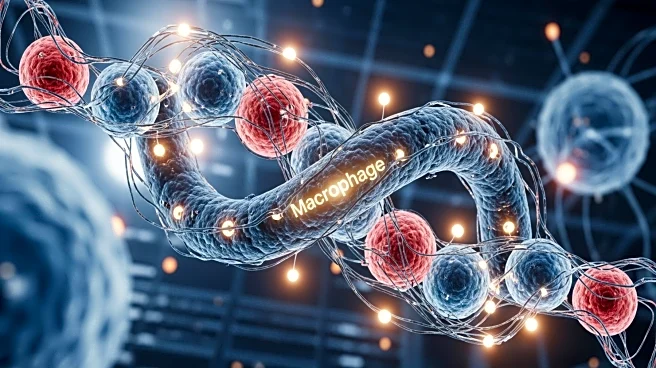What's Happening?
Recent research has highlighted the role of the VGLL4 gene in maintaining extracellular matrix homeostasis and mitigating osteoarthritis (OA) in preclinical models. The study focused on the expression
of VGLL4 in chondrocytes, the sole cell population in articular cartilage, which is crucial for cartilage health. VGLL4 was found to be highly expressed in chondrocytes and plays a significant role in promoting chondrocyte anabolism and collagen formation. The research involved VGLL4 knockout mice, which exhibited impaired synthesis of collagen and abnormal cartilage anabolism, leading to cartilage damage and aging. The study also demonstrated that VGLL4 interacts with SMAD3 through TEAD4, forming a complex that promotes chondrocyte anabolism. This interaction is crucial for maintaining cartilage health and preventing OA.
Why It's Important?
The findings are significant as they offer a potential therapeutic target for osteoarthritis, a common degenerative joint disease affecting millions. By understanding the role of VGLL4 in cartilage health, new treatments could be developed to prevent or slow the progression of OA. The study suggests that VGLL4 supplementation could alleviate cartilage damage and fibrosis, offering hope for improved management of OA. This research could lead to advancements in regenerative medicine and the development of gene therapies targeting VGLL4 to enhance cartilage repair and maintenance.
What's Next?
Further research is needed to explore the therapeutic potential of VGLL4 in human models. Clinical trials could be initiated to test VGLL4-based treatments for osteoarthritis. Additionally, the study opens avenues for exploring other genes involved in cartilage health and their interactions with VGLL4. Researchers may also investigate the long-term effects of VGLL4 supplementation and its efficacy in different stages of OA.
Beyond the Headlines
The study raises ethical considerations regarding gene therapy and its accessibility to patients. The potential for VGLL4-based treatments to transform OA management could lead to discussions on healthcare policy and funding for genetic research. Moreover, understanding the genetic basis of cartilage health could influence cultural perceptions of aging and joint health, promoting proactive measures for joint care.











